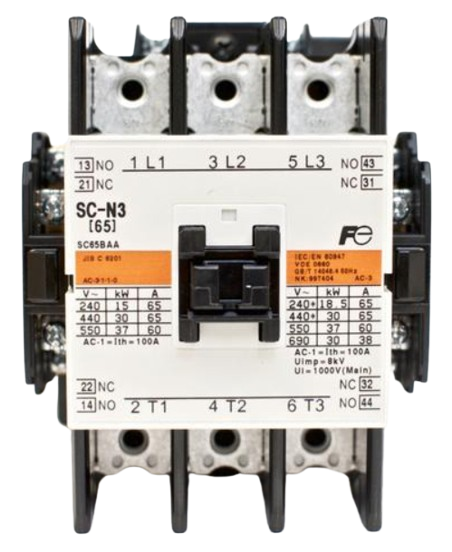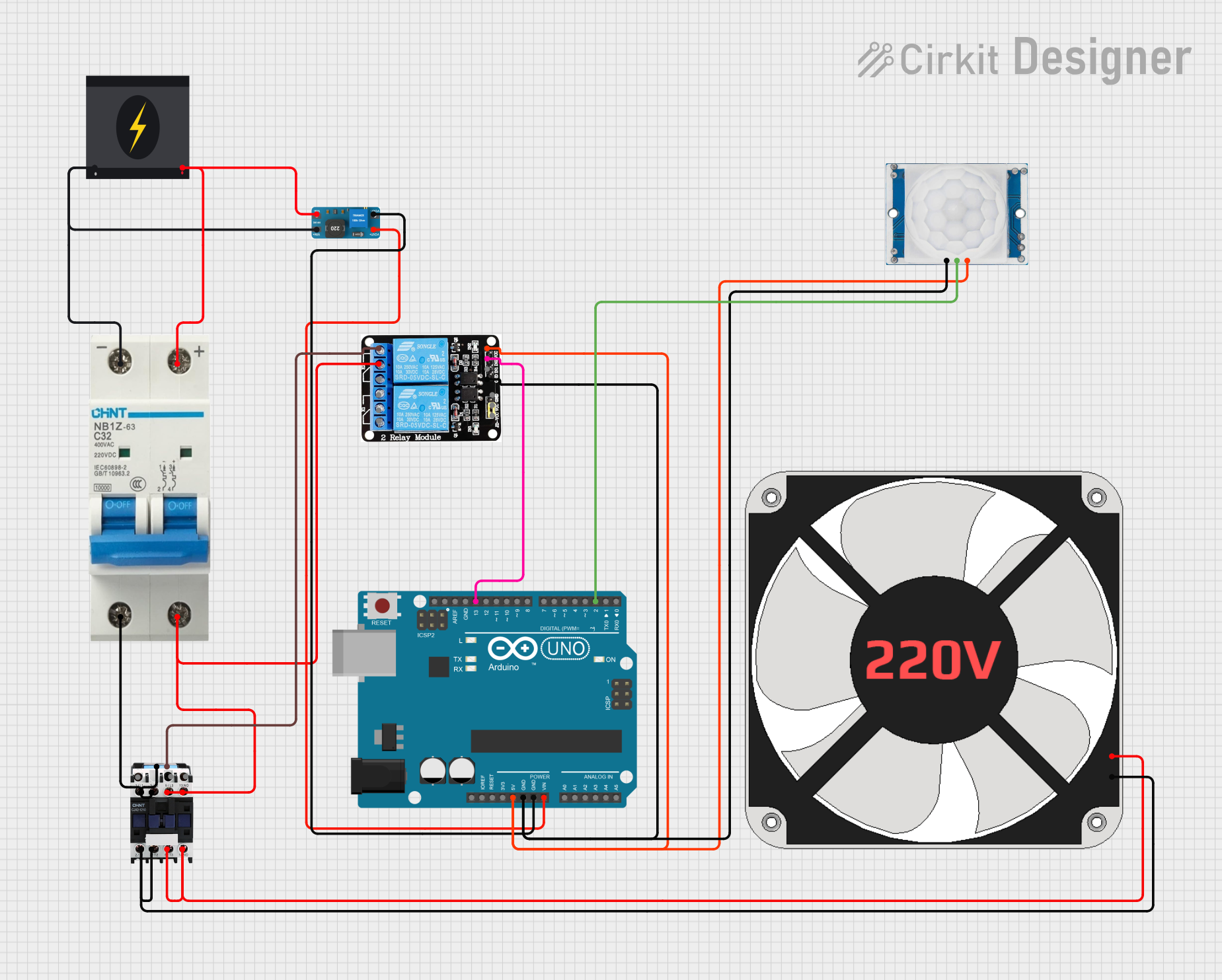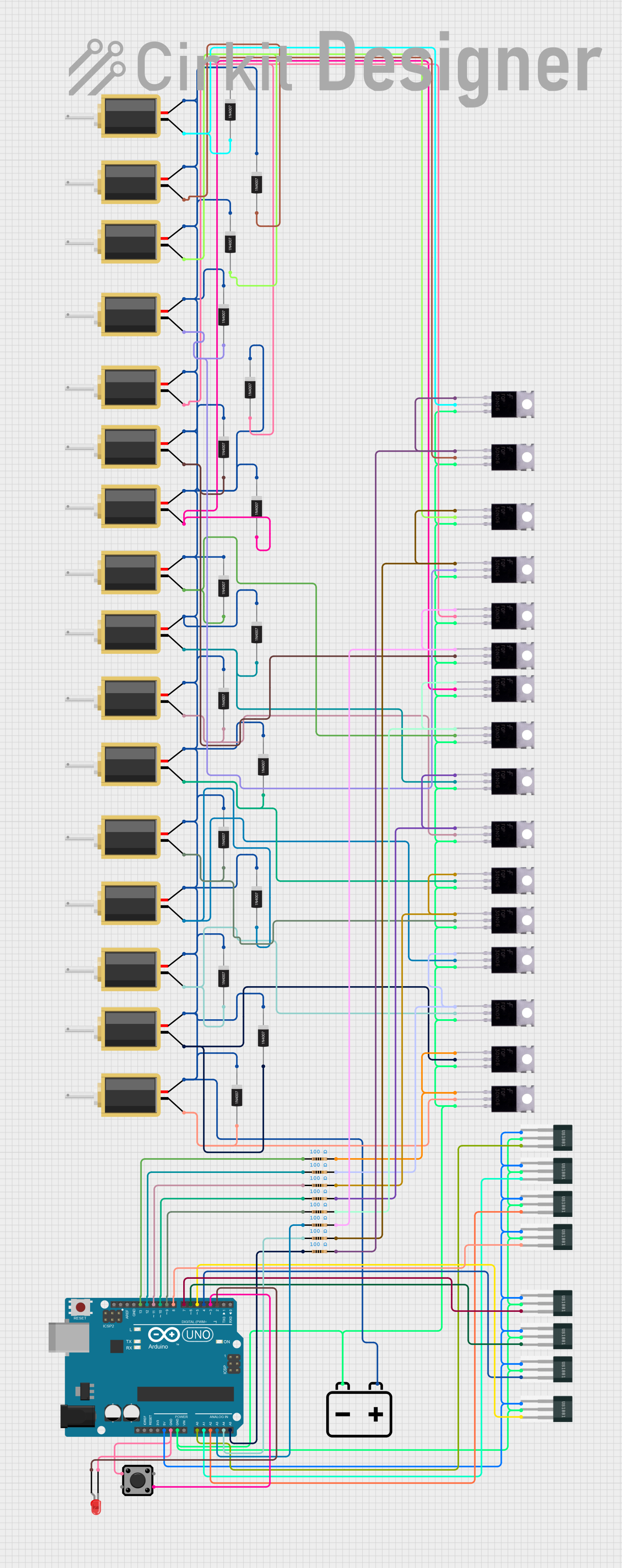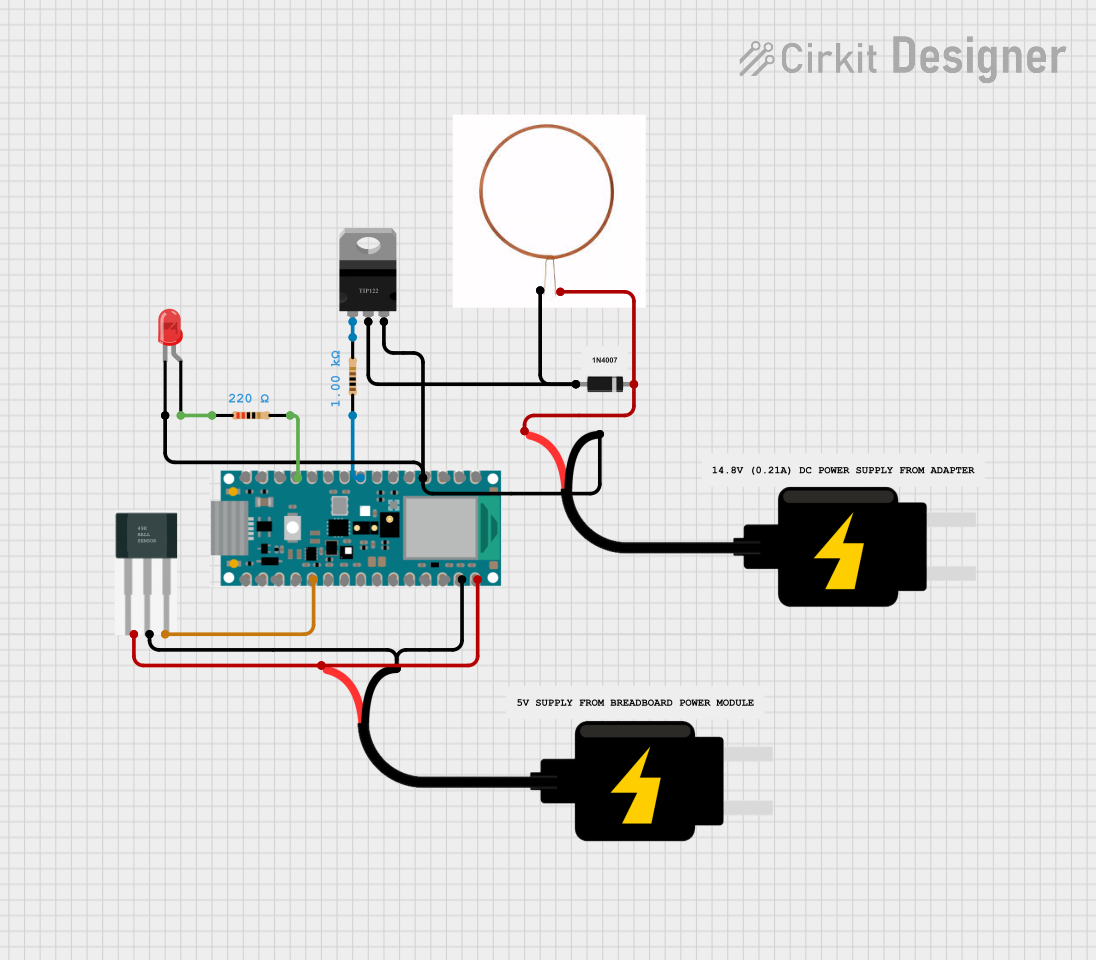
How to Use Magnetic Contactor: Examples, Pinouts, and Specs

 Design with Magnetic Contactor in Cirkit Designer
Design with Magnetic Contactor in Cirkit DesignerIntroduction
A magnetic contactor is an electrically controlled switch used for switching power circuits. It operates similarly to a relay but is specifically designed to handle higher current applications. The core of the contactor consists of an electromagnet that, when energized, closes the contacts to allow current to flow through the circuit. Magnetic contactors are widely used in industrial and commercial applications for controlling electric motors, lighting systems, heating equipment, and other high-power devices.
Explore Projects Built with Magnetic Contactor

 Open Project in Cirkit Designer
Open Project in Cirkit Designer
 Open Project in Cirkit Designer
Open Project in Cirkit Designer
 Open Project in Cirkit Designer
Open Project in Cirkit Designer
 Open Project in Cirkit Designer
Open Project in Cirkit DesignerExplore Projects Built with Magnetic Contactor

 Open Project in Cirkit Designer
Open Project in Cirkit Designer
 Open Project in Cirkit Designer
Open Project in Cirkit Designer
 Open Project in Cirkit Designer
Open Project in Cirkit Designer
 Open Project in Cirkit Designer
Open Project in Cirkit DesignerCommon Applications and Use Cases
- Electric Motor Control: Starting, stopping, and reversing motors in industrial machinery.
- Lighting Systems: Controlling large lighting loads in commercial buildings.
- HVAC Systems: Switching compressors, fans, and pumps in heating, ventilation, and air conditioning systems.
- Power Distribution: Managing high-current circuits in industrial power systems.
- Automation Systems: Used in programmable logic controllers (PLCs) for automated processes.
Technical Specifications
Below are the general technical specifications for a typical magnetic contactor. Note that specific models may vary, so always refer to the datasheet of the particular contactor you are using.
Key Technical Details
- Operating Voltage: 24V, 48V, 110V, 220V, or 440V AC/DC (varies by model)
- Coil Power Consumption: Typically 3-10W
- Contact Ratings:
- Voltage: Up to 1000V AC
- Current: 9A to 800A (depending on the model)
- Number of Poles: 1P, 2P, 3P, or 4P
- Mechanical Life: Up to 10 million operations
- Electrical Life: Up to 1 million operations
- Operating Temperature: -25°C to +55°C
- Insulation Resistance: ≥ 10MΩ at 500V DC
Pin Configuration and Descriptions
Magnetic contactors typically have terminals for the main power circuit and the control circuit. Below is a general description of the terminal layout:
| Terminal | Description |
|---|---|
| L1, L2, L3 | Input terminals for the main power supply (three-phase AC input). |
| T1, T2, T3 | Output terminals connected to the load (e.g., motor, lighting system). |
| A1, A2 | Coil terminals for the control circuit. A1 is typically the positive terminal. |
| NO (Normally Open) | Auxiliary contact for additional control or signaling. |
| NC (Normally Closed) | Auxiliary contact for additional control or signaling. |
Usage Instructions
How to Use the Component in a Circuit
- Determine the Voltage and Current Ratings: Ensure the contactor's ratings match the requirements of your load and power supply.
- Connect the Main Power Circuit:
- Connect the three-phase power supply to the input terminals (L1, L2, L3).
- Connect the load (e.g., motor) to the output terminals (T1, T2, T3).
- Connect the Control Circuit:
- Connect the control voltage source to the coil terminals (A1 and A2).
- Use a switch, push button, or relay to control the coil's energization.
- Use Auxiliary Contacts (if needed):
- Connect auxiliary contacts (NO or NC) to control additional devices or provide feedback signals.
- Test the Circuit:
- Energize the control circuit to activate the contactor and verify that the load operates as expected.
Important Considerations and Best Practices
- Overload Protection: Always use an overload relay in series with the contactor to protect the load from overcurrent conditions.
- Voltage Compatibility: Ensure the control voltage matches the coil voltage rating of the contactor.
- Proper Mounting: Mount the contactor on a DIN rail or a secure panel to prevent vibration or movement.
- Avoid Overheating: Ensure adequate ventilation around the contactor to prevent overheating during operation.
- Regular Maintenance: Periodically inspect the contactor for wear, dirt, or loose connections.
Example: Connecting a Magnetic Contactor to an Arduino UNO
You can use an Arduino UNO to control a magnetic contactor via a relay module. Below is an example code snippet:
// Example: Controlling a magnetic contactor with Arduino UNO
// This code uses a relay module to energize the contactor's coil.
const int relayPin = 7; // Pin connected to the relay module
void setup() {
pinMode(relayPin, OUTPUT); // Set the relay pin as an output
digitalWrite(relayPin, LOW); // Ensure the relay is off initially
}
void loop() {
// Turn on the contactor
digitalWrite(relayPin, HIGH); // Energize the relay to close the contactor
delay(5000); // Keep the contactor on for 5 seconds
// Turn off the contactor
digitalWrite(relayPin, LOW); // De-energize the relay to open the contactor
delay(5000); // Wait for 5 seconds before repeating
}
Note: Ensure the relay module is rated to handle the contactor's coil voltage and current. Use an external power supply for the relay module if necessary.
Troubleshooting and FAQs
Common Issues and Solutions
Contactor Does Not Energize:
- Cause: Incorrect control voltage or loose connections.
- Solution: Verify the control voltage matches the coil rating and check all connections.
Excessive Noise During Operation:
- Cause: Loose mounting or worn-out components.
- Solution: Securely mount the contactor and inspect for mechanical wear.
Contacts Overheat:
- Cause: Overcurrent or poor contact surface.
- Solution: Check the load current and ensure it is within the contactor's rating. Clean or replace the contacts if necessary.
Frequent Coil Burnout:
- Cause: Voltage spikes or incorrect voltage.
- Solution: Use a surge suppressor or varistor across the coil terminals to protect against voltage spikes.
FAQs
Q: Can I use a magnetic contactor for DC loads?
A: Yes, but ensure the contactor is specifically rated for DC operation, as DC arcs are harder to extinguish than AC arcs.Q: What is the difference between a relay and a magnetic contactor?
A: A relay is designed for low-current applications, while a magnetic contactor is built to handle high-current loads.Q: How do I select the right magnetic contactor for my application?
A: Consider the load's voltage, current, and type (AC or DC). Also, check the number of poles and auxiliary contact requirements.Q: Can I manually operate a magnetic contactor?
A: Some contactors have a manual override feature, but they are primarily designed for electrical control.
By following this documentation, you can effectively use and troubleshoot a magnetic contactor in your projects. Always refer to the manufacturer's datasheet for specific details about your contactor model.